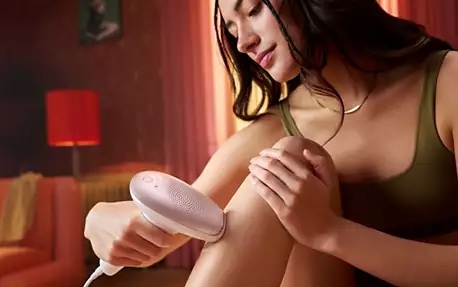
Which Philips Lumea is better for your needs?

Choosing to remove excess hair can be due to several reasons including cultural, aesthetic, and hygienic. However, sometimes, no matter how hard you try, you seem to still have an excess of unwanted hair growth that is hard to tackle. In this article, we will explore everything you need to know about excessive hair growth, including: When it comes to excessive hair growth, also known as hypertrichosis or hirsutism, hair removal is often the go-to before even investigating the cause. So, read on to discover our guide to excessive hair removal.
Before exploring the causes and tips for the removal of excessive hair growth in women, let’s explore the two different types of excessive hair growth:
Hirsutism is the growth of excess hair on a woman, usually characterised by dark hairs on the face and neck. This condition affects between 4-11% of women.2
Hypertrichosis is the growth of excess hair over and above the normal amount in both men and women. This can be anywhere on the body, including the face, neck, chest, tummy, lower back, buttocks, or thighs.
Now that you’re aware of the different types, let’s explore six common causes of excessive hair growth: Remember, we’re not medical experts, so if you have concerns about excessive hair growth and you’re not sure how to tackle it, consulting a healthcare professional is the best course of action.
Worried about excess hair growth? It may be time to speak to your doctor about excessive hair growth if: To determine the cause of excess hair growth in women, the doctor will often request a blood test to check your hormone levels. Once they have verified the cause, they may offer advice on how to deal with excessive body hair.
If you have visited your doctor about conditions such as PCOS and excess hair growth, they may advise one or more of the following to help control excess hair growth in women:
While working with your doctor or dermatologist to determine the cause of excessive hair growth, you may want to consider removing it. Here are our top methods for how to deal with excessive body hair: Whether caused by biology or hormonal imbalance, excessive hair growth due to conditions like PCOS can be uncomfortable and affect your self-esteem. With this guide, you can choose the best way to remove unwanted hair and consult your doctor or dermatologist for help identifying the cause. * When following the treatment schedule, measured on legs, individual results may vary ** Median hair reduction on legs: 78% after 12 treatments *** vs their current lady shaver, HUT Germany N=49, 2021
Intense pulsed light, or IPL, is one of the best ways to remove unwanted hair. IPL is a safe hair removal method with a decreased chance of injuries, irritation, and ingrown hairs. Additionally, it provides lasting results.
Top tip: The Philips Lumea IPL has attachments suitable for different parts of the body. From leg hair to excess facial hair, women can use this device to achieve up to 92% hair reduction in just three treatments* and six months of hair-free smooth skin after 12 treatments.**
As the hair is removed at the surface of the skin, shaving is a short-term solution when it comes to hair removal. However, this conventional approach to hair removal is cost-effective, swift, and effortless.
Top tip: It is crucial to use warm water and shaving cream or gel to safeguard your skin while employing this method.
Waxing is a popular method of hair removal that can be performed by a professional or at home. Although it may cause discomfort, it is a fast and effective way to remove excess hair growth in women.
Similar to waxing, sugaring offers a hair removal method that pulls the hair up at the root. It works well on large surface areas, offering a great choice for individuals who want a solution for excessive hair removal.
To achieve optimal results, it is recommended to epilate in the opposite direction of hair growth. This guarantees that the hairs are pulled out from the root, leading to longer-lasting results.
Although depilatory creams only offer short-term results, they offer a quick, easy, and budget-friendly method of hair removal to fit into your busy schedule.
Top tip: Protect your skin! To prevent unwanted adverse reactions on your skin, always read the label and follow the manufacturer's instructions. Be sure to do a patch test 24 hours before your planned hair removal treatment.
Hair removal by electrolysis is costly and time-consuming, but its results are permanent. As a result of this technique, the hair follicle is targeted and destroyed, ensuring that hair cannot grow back. There is a possibility of a painful stinging sensation, which makes it not suitable for everyone, but for some people, it is worth it for the long-term benefits.